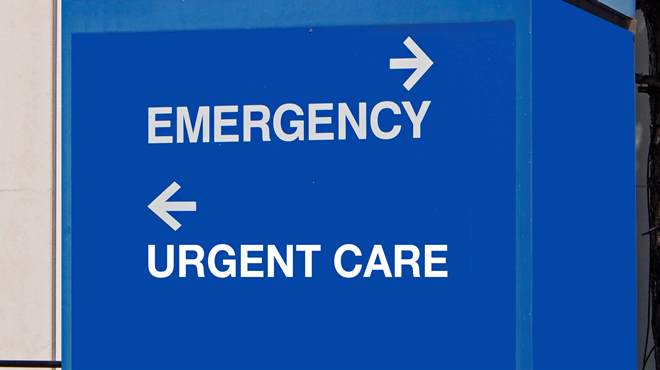What to Anticipate Throughout Your First Check Out to Urgent Care
What to Anticipate Throughout Your First Check Out to Urgent Care
Blog Article
Comprehending the Relevance of Urgent Care Solutions for Non-Life-Threatening Medical Issues
The relevance of immediate treatment services for non-life-threatening clinical concerns can not be overstated, particularly in today's health care landscape. These centers use a necessary choice for patients looking for prompt interest for conditions that require prompt treatment but do not require a browse through to the emergency situation area. By recognizing the benefits of urgent treatment, such as lowered delay times and price effectiveness, one can much better value their function in person health management. Yet, the subtleties of exactly how to navigate these services properly continue to be to be discovered, questioning regarding their optimal use.
What Is Urgent Treatment?
Urgent treatment describes a group of medical services made to resolve non-life-threatening conditions that need prompt attention yet do not call for a visit to the emergency space. These facilities offer a bridge between key treatment and emergency services, offering available healthcare options for people experiencing acute clinical issues, such as small fractures, strains, infections, or extreme diseases that occur suddenly.

The scope of services supplied by immediate care facilities can differ but generally includes therapy for typical disorders like colds, influenza, and allergic reactions, along with minor injuries (urgent care). In addition, numerous immediate care centers provide preventative services, such as vaccinations and physical examinations, to resolve broader health demands. By providing a hassle-free choice for immediate medical problems, these centers play a critical role in the medical care continuum, ensuring that patients get ideal care when they need it most
Advantages of Urgent Care Provider
Numerous individuals locate that utilizing immediate treatment services gives considerable advantages over typical emergency situation room sees or waiting for a main care appointment. Urgent treatment facilities commonly have shorter wait durations, permitting clients to obtain prompt clinical interest when they need it most.
One more benefit is the extended hours of operation. Many urgent care centers are open evenings and weekend breaks, fitting individuals who may not have the ability to see their medical care doctor during normal office hours. This versatility makes it simpler for individuals to access treatment at their benefit.
In addition, urgent treatment services usually use an affordable alternative to emergency clinic. People often face lower co-pays and total expenditures when looking for treatment for minor ailments at urgent care centers instead of health center emergency departments.
Lastly, immediate treatment centers are geared up to manage a variety of non-life-threatening problems, giving a wide range of services under one roofing system. This detailed approach not just streamlines the treatment process but also boosts person satisfaction by delivering reliable and punctual treatment.
Usual Conditions Dealt With
What sorts of non-life-threatening conditions can clients anticipate to get treatment for at immediate treatment facilities? Urgent care facilities are geared up to deal with a vast selection of typical clinical problems that need prompt focus but do not position a prompt threat to life. These centers frequently deal with problems such as small cracks, strains, and pressures, offering necessary look after injuries that occur throughout daily activities or sports.
Furthermore, clients frequently seek therapy for respiratory infections, consisting of colds, flu, and respiratory disease, where prompt treatment can minimize signs and avoid issues. Skin problem such as rashes, insect bites, and minor burns are also typically resolved, as prompt treatment can alleviate pain and reduce the threat of infection.

Comparing Urgent Care and Emergency Rooms

One substantial difference waits times; immediate care facilities normally have shorter delay times contrasted to emergency clinic, which can internet be crowded with more critical instances. This performance enables patients to get timely therapy for their conditions.
From a monetary viewpoint, immediate treatment check outs have a tendency to be less costly than emergency room visits. Insurance copays and out-of-pocket expenditures are frequently lower at urgent treatment centers, making them an extra cost-effective option for non-emergency circumstances.
Exactly How to Choose an Urgent Care Facility
Choosing the appropriate urgent treatment center can substantially enhance the quality of care obtained throughout a non-life-threatening medical problem. When selecting an urgent treatment facility, numerous key aspects ought to be considered.
First, analyze the center's certification and licensing. Try to find facilities that are recognized by identified companies, as this indicates adherence to high quality requirements. Next, examine the variety of solutions supplied. Some urgent treatment facilities concentrate on details locations, while others supply thorough take care of various clinical problems.
In addition, think about the location and hours of procedure. An easily situated facility with extensive hours can be crucial for prompt treatment. It's also advisable to examine the center's wait times and individual testimonials, which can supply insights right into the general patient experience.
Conclusion
In conclusion, immediate care services play an important role in attending to non-life-threatening clinical problems successfully. By using instant attention for various problems, these centers enhance person accessibility to prompt care while minimizing the pressure on emergency rooms. The advantages of immediate care, consisting of expanded hours and lower prices, make them a favorable choice for people looking for punctual therapy. Ultimately, understanding the value of urgent treatment centers contributes to improved medical care management and client fulfillment.
Several people locate that making use of urgent care services provides Source considerable advantages over standard emergency situation room gos to or waiting for a key care visit. Several urgent treatment centers are open nights and weekend breaks, accommodating people who might not be able to see their key official site treatment physician throughout normal office hours. Urgent treatment centers are created to address non-life-threatening conditions, such as small cracks, infections, and health problems, supplying a practical alternative to emergency situation spaces for those in need of immediate treatment. Some urgent care facilities specialize in certain locations, while others give thorough care for different medical problems.
Report this page